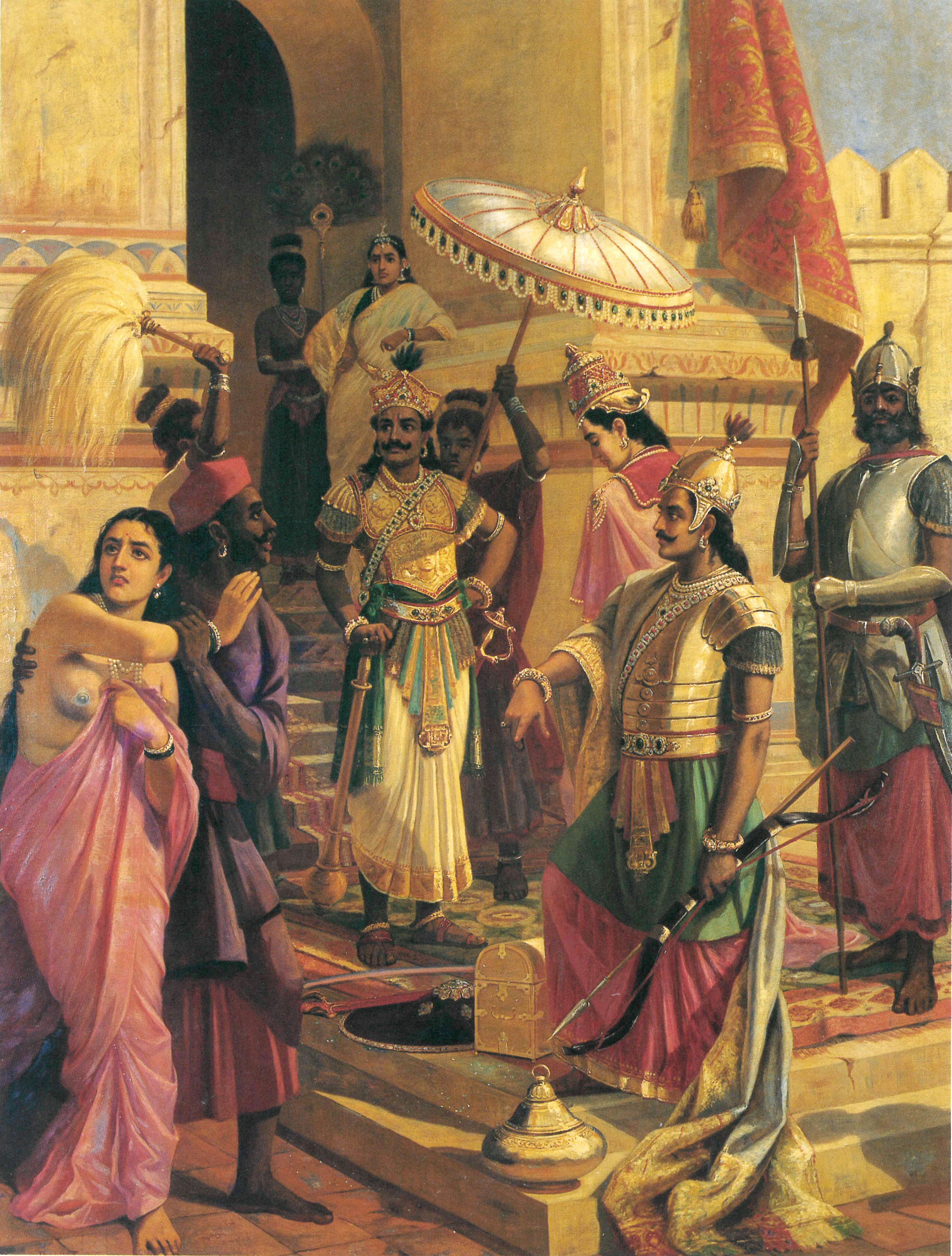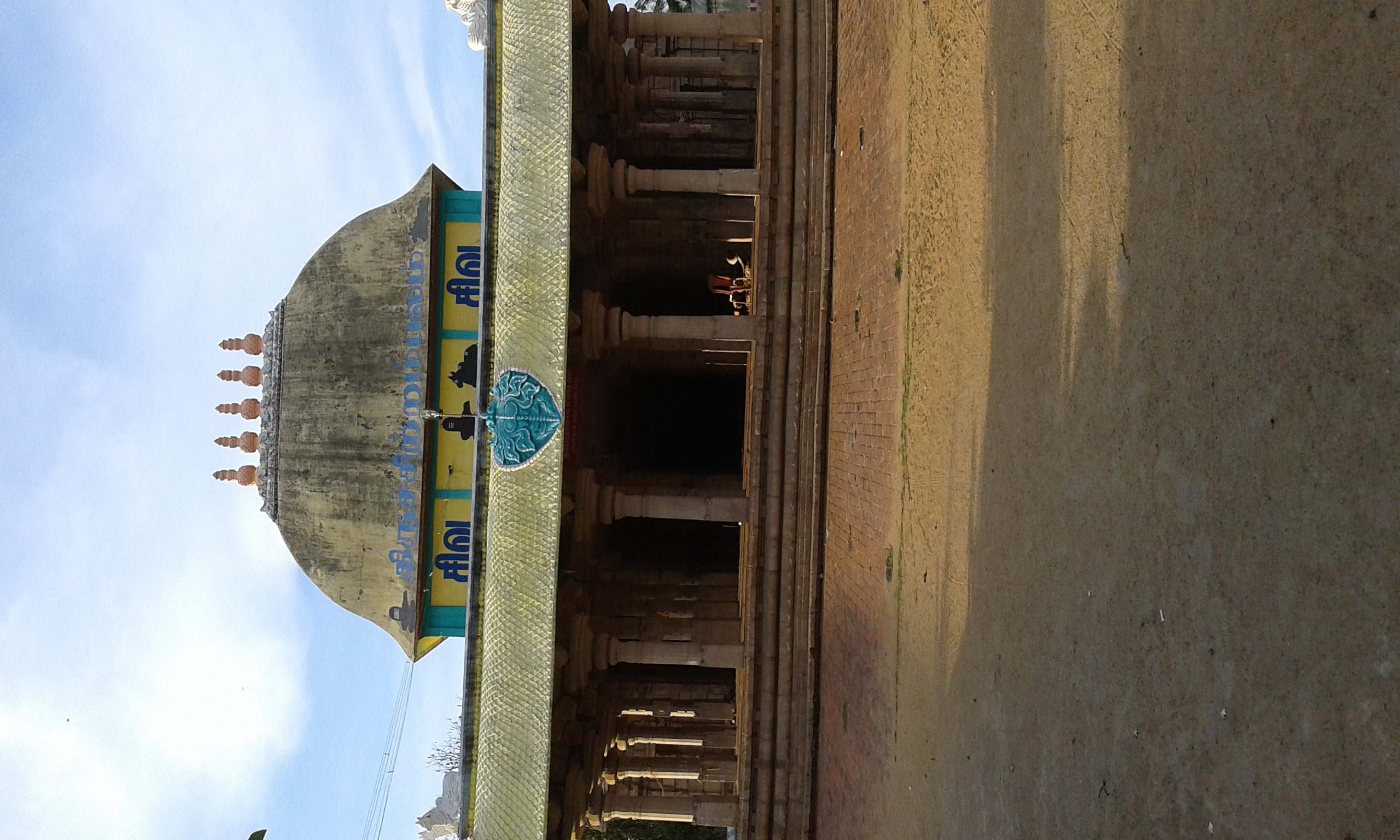|
Ashta Bhairava
Ashta Bhairavas ("Eight Bhairavas") are eight manifestations of the Hindu god Bhairava, a ferocious aspect of the god Shiva. They guard and control the eight directions. Each Bhairava has seven sub Bhairavas under him. All of the Bhairavas are ruled and controlled by Maha Kala Bhairava (shown in picture), who is considered the supreme ruler of time of the universe and the chief form of Bhairava. Listed below are the Ashta Bhairava, along with their ruling goddesses, their vahana (mount), and the direction each guards. Also given are their lucky stones, and the consecrated temples in Tamil Nadu, India, where people born on the listed nakshatras get the Ashta Bhairava’s favours and Dosha Nivritti (remedies for problems). The Ashta Bhairavas, all 8 of them, can be seen at Kashi Vishwanath Temple, Sattainathar Temple, Sirkazhi & Aragalur Sri Kamanada Eswar Temple, Shri Mahabairavar Rudra Aalayam, Chengalpattu. Asithanga Bhairava This form is white complexioned and has four arms. ... [...More Info...] [...Related Items...] OR: [Wikipedia] [Google] [Baidu] |
Vaishnavi (Matrika Goddess)
Matrikas (Sanskrit: मातृका (singular), IAST: mātṝkās, lit. "divine mothers") also called Matar or Matri, are a group of mother Devi, goddesses who are always depicted together in Hinduism. The Matrikas are often depicted in a group of seven, the Saptamatrika(s) (Seven Mothers). However, they are also depicted as a group of eight, the Ashtamatrika(s). In the ''Brihat Samhita'', Varahamihira says that "Mothers are to be made with cognizance of (different major Hindu) gods corresponding to their names." They are associated with these gods as their spouses or their energies (''Shaktis''). Brahmani emerged from Brahma, Vaishnavi (Matrika goddess), Vaishnavi from Vishnu, Maheshvari from Shiva, Sachi, Indrani from Indra, Kaumari from Kartikeya, Skanda, Varahi from Varaha and Chamunda from Devi. and additionals are Pratyangira, Narasimhi from Narasimha and Vinayaki from Ganesha. Originally believed to be a personification of the seven stars of the star cluster the Plei ... [...More Info...] [...Related Items...] OR: [Wikipedia] [Google] [Baidu] |
Chandi
Chandi ( sa, चण्डी, ) or Chandika () is a Hindu deity. Chandika is another form of Mahadevi, similar to Durga. Chandika is a powerful form of Mahadevi who manifested to destroy evil. She is also known as ''Kaushiki'', '' Katyayani'', ''Asthadasabuja'' ''Mahalakshmi'' and ''Mahishasuramardini''. History or is the name by which the Supremely divine is referred to in Devī Māhātmya. Chandi represents the killer of Chanda. ''Chanda'' and Munda were Ashur's strong army generals. The word Chandi also refers to the fiery power of anger of the Brahman. Bhaskararaya, a leading authority on matters concerning Devi worship, defines Chandi as 'the angry, terrible or passionate one'. While scholars debate whether an old Goddess was Sanskritized or a suppressed Goddess was reclaimed, the fact remains that since the very early days, the Devi was worshiped in the subcontinent regardless of whether she appears as a supreme deity in Brahminic texts. Scholars who trace her ... [...More Info...] [...Related Items...] OR: [Wikipedia] [Google] [Baidu] |
Piranmalai
Piranmalai is a village located in Singampunari Taluk in Sivaganga district, Tamil Nadu, India. The nearest town is Singampunari located at away. Piranmalai is a fortified hill at an elevation of over . This is a last outcrop of the Eastern Ghats, with a Bhairavar temple and five peedas in the rocks of the hill called the Pandava Therthams, is also sacred to the Muslims with a dargah of Waliullah Sheikh Abdullah Shaheb on its peak. At the foot hill, there are traces of a moat and Fort Marudhu, which was pulled down in early 19th century. One of the seven Vallals, Paari ruled this area. The barren hill is believed to have been covered with dense jungle in the days of Maruthu Pandiyar's rule from late 17th century to 1801. It was part of a large jungle that extended from the Eastern Ghats to the Palk Straits. The hilly village includes five areas (Piranmalai Main, Mathagupatti, Pudupatti, Pappapatti, Gopalapuram). Piranmalai Kodunkundreeswar Temple is a hill temple reached ... [...More Info...] [...Related Items...] OR: [Wikipedia] [Google] [Baidu] |
Rameswaram
Rameswaram (; also transliterated as Ramesvaram, Rameshwaram) is a municipality in the Ramanathapuram district of the Indian state of Tamil Nadu. It is on Pamban Island separated from mainland India by the Pamban channel and is about 40 kilometres from Mannar Island, Sri Lanka. It is in the Gulf of Mannar, at the tip of the Indian peninsula. Pamban Island, also known as Rameswaram Island, is connected to mainland India by the Pamban Bridge. Rameswaram is the terminus of the railway line from Chennai and Madurai. Together with Varanasi, it is considered to be one of the holiest places in India to Hindus and is part of the Char Dham pilgrimage. According to Hindu ancient texts, Lord Ram had built a bridge from here across the sea to Lanka to rescue his wife Sita from her abductor Ravana. The Temple, dedicated to the Hindu god Shiva, is at the centre of the town and is closely associated with Rama and Shiva. The temple and the town are considered a holy pilgrimage site for Shai ... [...More Info...] [...Related Items...] OR: [Wikipedia] [Google] [Baidu] |
Preta
Preta ( sa, प्रेत, bo, ཡི་དྭགས་ ''yi dags''), also known as hungry ghost, is the Sanskrit name for a type of supernatural being described in Hinduism, Buddhism, Taoism, and Chinese folk religion as undergoing suffering greater than that of humans, particularly an extreme level of hunger and thirst. They have their origins in Indian religions and have been adopted into East Asian religions via the spread of Buddhism. Preta is often translated into English as "hungry ghost" from the Chinese and East Asian adaptations. In early sources such as the ''Petavatthu'', they are much more varied. The descriptions below apply mainly in this narrower context. The development of the concept of the preta started with just thinking that it was the soul and ghost of a person once they died, but later the concept developed into a transient state between death and obtaining karmic reincarnation in accordance with the person's fate. In order to pass into the cycle of ka ... [...More Info...] [...Related Items...] OR: [Wikipedia] [Google] [Baidu] |
Chamunda
Chamunda (Sanskrit: चामुण्डा, ISO-15919: Cāmuṇḍā), also known as Chamundeshwari, Chamundi or Charchika, is a fearsome form of Chandi, the Hindu Divine Mother Shakti and is one of the seven Matrikas (mother goddesses).Wangu p.72 She is also one of the chief Yoginis, a group of sixty-four or eighty-one Tantric goddesses, who are attendants of the warrior goddess Parvati.Wangu p.114 The name is a combination of Chanda and Munda, two monsters whom Chamunda killed. She is closely associated with Kali, another fierce aspect of Parvati. She is identified with goddesses Parvati, Kali or Durga. The goddess is often portrayed as residing in cremation grounds or around holy fig trees. The goddess is worshipped by ritual animal sacrifices along with offerings of wine. The practice of animal sacrifices has become less common with Shaivite and Vaishnavite influences. Origins Ramakrishna Gopal Bhandarkar says that Chamunda was originally a tribal goddess, worshipp ... [...More Info...] [...Related Items...] OR: [Wikipedia] [Google] [Baidu] |
Indrani
Indrani (Sanskrit: इन्द्राणी, IAST: ''Indrāṇī, lit.'' Indra's queen), also known as Shachi (Sanskrit: शची, IAST: ''Śacī''), is the queen of the devas in Hinduism. Described as tantalisingly beautiful, proud and kind, she is the daughter of the asura Puloman and the consort of the king of the devas, Indra. According to legend, due to her heavenly beauty and sensuality, Indrani was desired by many men, many of whom tried to marry her. When Indra was away performing his penance for the slaying of Vritasura, Nahusha, a mortal king of the Lunar dynasty, was chosen as the ruler of heaven. The latter tried to seduce Shachi and make her his queen, though she cleverly executed a scheme to dethrone him and later reunite with her husband. She is an important goddess in Shaktism, a major sect of Hinduism. Indrani (or Aindri) is one of the Sapta Matrika—the seven divine mothers. She is worshipped in South India as an independent deity, and is most often w ... [...More Info...] [...Related Items...] OR: [Wikipedia] [Google] [Baidu] |
Amona
Amona may refer to: Places * Amona, Goa, a village in Goa, India *Amona, Mateh Binyamin, an Israeli outpost in the central West Bank *Isla de Mona, known in the pre-Columbian era as Amona Other *"Amona", a song on the album ''Necessary Evil A necessary evil is an evil that someone believes must be done or accepted because it is necessary to achieve a better outcome—especially because possible alternative courses of action or inaction are expected to be worse. It is the "lesser evi ...'' by Israeli band Salem *'' Asteia amona'', an Asteiidae species of fly {{Disambiguation, geo ... [...More Info...] [...Related Items...] OR: [Wikipedia] [Google] [Baidu] |
Veezhinathar Kovil, Thiruveezhimizhalai
Veezhinathar Temple (வீழிநாதர் கோயில், திருவீழிமிழலை :ta:திருவீழிமிழலை வீழிநாதேஸ்வரர் கோயில்]) is an ancient temple located in Thiruveezhimizhalai dedicated to Lord Shiva. Thiruveezhimizhalai is a revenue village in Kudavasal Taluka of Thiruvarur District in Tamil Nadu, India. This temple is the 61st Padal Petra Kovil also known as Paadal Petra Sthalams in the Chola Naadu, South of Kaveri. Mythology Parvati is said to have been reborn as Katyayani and married Shiva here. Vishnu received the cosmic weapon Chakrayudam from Shiva here in lieu of the 1000 flower worship to Shiva. A panel depicting the divine marriage is seen behind the Shivalingam. The Moolvar vimanam is believed to be brought to here by Mahavishnu. History The name Thiruveezhimizhalai is said to have come from two legends that took place here. The place was once a forest full of Sandhana ... [...More Info...] [...Related Items...] OR: [Wikipedia] [Google] [Baidu] |
Varahi
Varahi ( sa, वाराही, )) is also used as the name of the consort of Varaha, who is identified with Bhumi (the earth goddess). This consort is depicted in a human form., group=note is one of the Matrikas, a group of seven mother goddesses in the Hindu religion. Bearing the head of a sow, Varahi is the shakti (feminine energy) of Varaha, the boar avatar of the god Vishnu. In Nepal, she is called Barahi. In Rajasthan and Gujarat, she is venerated as Dandini. Varahi is more commonly venerated in the sect of the Goddess-oriented Shaktism, but also in Shaivism (devotees of Shiva) and Vaishnavism (devotees of Vishnu). She is usually worshipped at night, using secretive Vamamarga Tantric practices. The Buddhist goddesses Vajravārāhī and Marichi have their origins in the Hindu goddess Varahi. Legend According to the Shumbha-Nishumbha story of the ''Devi Mahatmya'' from the ''Markandeya Purana'' religious texts, the Matrikas goddesses appears as ''shakti''s (fem ... [...More Info...] [...Related Items...] OR: [Wikipedia] [Google] [Baidu] |
Jwala Ji
Jwala Ji ( Pahari: जवाला जी, pa, ਜਵਾਲਾ ਜੀ, hi, ज्वाला जी) is a Hindu Goddess. Alternative spellings and names for Jwala Ji include ''Jawala Ji'', ''Jwala Devi'' and ''Jwalamukhi Ji''. The physical manifestation of Jwala Ji is always a set of eternal flames, and the term ''Jwala'' means flame in Sanskrit (cognates: proto-Indo-European ''guelh'', English: ''glow'', Lithuanian: ''zvilti'') and '' Ji'' is an honorific used in the Indian subcontinent. Jwalaji/jawalaji (flame) or Jwala Mukhi (a person with a face glowing like fire) is probably the most ancient temple discussed here besides Vaishno Devi. It is mentioned in the Mahabharata and other scriptures. There is a natural cave where eternal flames continue to burn. Some say there are nine flames out of the nine Durgas ... Several schools of Buddhism also share the symbolism of a seven-forked sacred flame. The Legend The legend is as follows: In ancient times when demons lorded ove ... [...More Info...] [...Related Items...] OR: [Wikipedia] [Google] [Baidu] |







